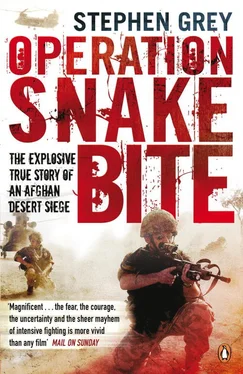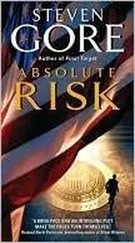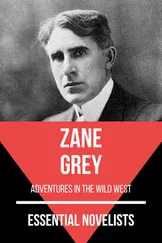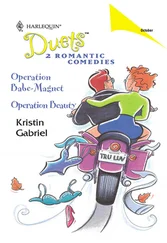To the public, the war in Helmand was described as a battle for political power – a fledgling democracy fighting an Islamic radical movement, the Taliban, who were linked to terrorists. In reality, the war was more than anything about drugs. Drugs were turning tribe against tribe and family against family. It was shattering the old agreements that divided up the land and water. One tribe might choose the government to support its claim on the opium trade; another might choose the Taliban; and others might play off one side against the other.
Before they arrived, the British had tried to intervene decisively against the drugs mafia. They had persuaded President Karzai to sack Sher Muhammad Akhundzada as governor after a raid by US drug enforcement agents and Afghan police on Akhundzada’s compound found 9 metric tonnes of opium, the largest US seizure in the country since 2002. The governor said it was stored contraband awaiting destruction, but few believed him. [9] See James Risen, ‘Poppy Fields Are Now a Front Line in Afghan War’, The New York Times , 16 May 2007, www.nytimes.com/2007/05/16/world/asia/16drugs.htm , and US Drug Enforcement Administration Congressional Testimony by Karen P. Tandy, Administrator, DEA, before the Committee on Armed Services, US House of Representatives, 28 June 2006, www.usdoj.gov/dea/pubs/cngrtest/ct062806.html .
Yet when they arrived the British declared a policy of noninterference with opium cultivation. Bases were built right next to poppy fields. The army declared destroying these crops would simply lead the population to support the Taliban. While Akhundzada might have been replaced as governor on paper by a more pro-British technocrat, Muhammad Daoud, the sacked governor remained as close as ever to President Karzai. And then there were doubts about the Karzai family’s connections to others in the drugs trade, not least his own brother in Kandahar, Ahmed Wali Karzai, who was frequently named in intelligence reports as being involved in the heroin business, although he denied any involvement. [10] See, for example, details in James Risen, ‘Reports Link Karzai’s Brother to Afghanistan Heroin Trade’, The New York Times , 4 October 2008.
There were some who began to wonder, darkly, if Britain’s military were being drawn into what was essentially a drug turf war.
In the autumn of 2007 – nearly eighteen months after the first deployment in Helmand – a fresh set of British servicemen arrived to take over. Out of a deployment of 7,800 men and women, some 6,000 were destined for Helmand, to take charge of a multinational NATO brigade known as Task Force Helmand. Also under British command were Danish, Czech and Estonian forces, making up a total strength in the province of just over 7,000 people.
The troops arriving came to a battleground that was mostly the fertile irrigated land that stretched along the Helmand River as well as in its main tributary wadis. This was where the province’s population of just under one million people lived. The British called it the ‘green zone’.
In broad terms, the Afghan government and NATO troops now controlled the main towns, where about one in twenty people normally lived. The Taliban generally controlled the populated countryside. No one controlled the open desert, through which both sides could move with ease but where there was little shelter for the Taliban to hide from NATO air power. It made little sense, then, for the Taliban to fight their battles here.
At the point where the Helmand River entered Helmand province was the large Kajaki lake and dam. [11] The dam was opened in April 1953. A turbine for producing power was added in 1975. The dam is ‘300 feet high and 887 feet long, with a 32 mile reservoir and a capacity of 1,495,000 acre-feet of water,’ Louis Dupree, Afghanistan (Princeton: Princeton University Press, 1973), p. 484.
The hydroelectric plant was supposed to supply electricity from here across southern Afghanistan, but only one of its three turbines worked at full capacity: one had failed completely and another was due to be shut down for maintenance. With the villages around deserted due to the fighting, a British outpost was in place to guard the dam and protect a team of US-funded contractors who were hoping to repair the plant. The Taliban lay behind clear front lines to the north and south of the dam.
From Kajaki, the river flowed in a broadly south-westerly direction through a wide Taliban-controlled canyon to the town of Sangin, a market town on the south bank of the river with a population of around 14,000 that had been heavily fought-over but had returned to British control in the spring of 2007. From Sangin, the river continued to the south-west through a wider green valley and meandered 20 miles to Gereshk, a town with a population of 60,000, the second-biggest urban centre in the province. The strategic Herat–Kandahar highway that bridged the Helmand at Gereshk had been rebuilt in recent years and was now called the national Highway One. Like Russian troops before them, NATO relied on this road to transport its essential supplies. But it was also an essential artery of normal commerce for the country. Along Highway One in the desert to the west of Gereshk lay Camp Bastion, the largest British military base built anywhere since the Second World War.
Next on the river from Gereshk, just above the confluence with the Arghandhab River and at the point where the valley flattened out to snake across sandy desert, lay Lashkar Gah, the American-built provincial capital with a population of 70,000 swelled by refugees from the war. The town housed the headquarters of Task Force Helmand and civilian advisers known as the Provincial Reconstruction Team (PRT).
Thirty-five miles south of here lay Garmsir, the most southern town held by British forces. It was almost deserted due to the fighting and close to a fixed First World War-like front line, complete with trenches and a no man’s land. The main market bazaar had now moved south into territory controlled by the Taliban, who also ran a field hospital there. The main roads from the Pakistan border, 110 miles further south, converged at Garmsir. It was the gateway to Helmand.
South of Garmsir was an area the British called the Fish Hook, where the river turned to the west and flowed across into neighbouring Nimroz province. All of this was enemy territory, challenged only by raids from US and British special forces and reconnaissance troops.
Apart from the towns along the Helmand River, there were two further towns of importance to the battle. Both of them lay in the rocky desert plateau in the north. Now Zad was an oasis in the desert north-west of Sangin. It was now a ‘Marie Celeste’ town deserted due to the fighting. Finally, there was the town of Musa Qala. With a population of 30,000 it lay due north of Sangin, halfway up the wide Musa Qala wadi, down which a river flowed in flood. It was the biggest centre of opium production in the world.
For the last six months, all the major towns of Helmand had been in government hands and either had a NATO garrison or were peaceful. All except one: the Taliban stronghold of Musa Qala.
‘How vain the power that defies
The bonnie English Rose.’
Green Howards regimental march
Queen Street, Blackpool, Lancashire, 9 September
B Company of the 2nd Battalion of the Yorkshire Regiment (Green Howards) was formed up and ready for action. The officer commanding (OC) approached and reviewed his men, the same soldiers that I would meet three months later on the battlefield.
‘Permission to have a go, sir?’ said Corporal Carl Peterson, a section commander.
Читать дальше












